









Products in the Same Family
Why Purchase from All-Star Telescope?
Free Expert Support
Whether you are a first timer needing help with setting up or an enthusiast that can't quite make that one thing work, our expert staff are ready to support your needs. With decades of knowledge and first hand experience we've been there and we can help you through it!
Stress Free, Secure Transactions
You can trust purchasing and delivery with All-Star Telescope. All of our transactions are 100% secure and Level 1 PCI DSS compliant thanks to Shopify's ShopPay platform. For additional protection, we insure 100% of the value of every shipment we make. If it get's lost during shipment, we replace it. If it gets damaged during shipment, we replace it. We make sure your product arrives exactly as you would expect it to; we promise.
We also ensure privacy protection. We never keep any of your credit card information on file and any of your personal data is stored according to our policies.
30 Day Return Policy
Buy with confidence knowing that we accept returns up to 30 days after purchase. We want you to have something you will actually use and we are confident that we keep good quality products in our store with No Junk.
Price Match Promise
Shipping around for the best price is tough, we make it easier by offering the best pricing in the market. But if you find a better price on an in-store item somewhere else we will match it!
Recommended Accessories

Celestron StarSense AutoGuider / AutoAlign...
Product Description
The Celestron StarSense Autoguider is an all-in-one solution that makes using your telescope easier and more rewarding than ever. This powerful, compact device connects to your Celestron mount to enhance its pointing accuracy and help you create sharp, long-exposure images with ease. Whether you’re an experienced astroimager or just starting in the hobby, adding this game-changing accessory will ensure you have more quality time under the stars.
Celestron StarSense AutoGuider Features
Automatic Alignment: Be Ready to Observe in Minutes
StarSense Autoguider aligns your telescope to the night sky in about three minutes with the press of a button—no user input is needed. Celestron’s patented StarSense technology “sees” star patterns overhead and matches them to its internal database to automatically orient the telescope. This feature eliminates the hassle of manually aligning your telescope, so you can focus on what’s important—observing and imaging.
Precise GoTo: Supercharge Your Pointing Accuracy
Celestron’s computerized mounts are already hailed for their pointing accuracy, but your mount gets even better when you add the StarSense Autoguider. Instead of placing celestial objects within the telescope’s field of view, Precise GoTo places them in the center of the field—even if you’re using a high-powered eyepiece or today’s small imaging sensors.
Autoguiding: Create Your Celestial Masterpiece
Capturing images of astronomical objects is one of the most exciting things you can do with your telescope. But to capture stunning deep-sky astroimages, you need autoguiding—the power to make tiny adjustments to the mount’s tracking to keep your target locked in over long exposures. Previous autoguiding setups were complex and expensive, usually involving a separate autoguiding camera, a guidescope, and a computer. StarSense Autoguider replaces all that—so even beginners can dive head-first into the world of imaging. Your targets are crisp and detailed, while background stars look like sharp pinpoints, never oblong or streaky.
Assisted Polar Alignment: Dial in the Best Alignment Possible
Many users find that adding StarSense Autoguider to their setup improves accuracy so dramatically that they no longer need to polar align their German equatorial mounts for most casual observing and imaging.
But if you want to achieve the best accuracy possible, the autoguider dramatically simplifies the polar alignment process. Simply follow the on-screen instructions on the hand control or in the CPWI software, and you can complete a full polar alignment in less than five minutes.
High-quality 4-element Optical Design
The StarSense Autoguider features a high-quality 4-element optical design devised by the famed optical designer Mark Ackermann. Its unique design delivers sharper images than other mini-guidescopes. The optical tube is threaded to accept 2” astronomical filters. Add an IR-pass filter to align your mount in twilight or a neutral density filter for daytime focusing.
The device also includes an onboard computer and a highly sensitive Sony IMX290-DLL monochrome CMOS image sensor, all working together to provide exceptional guiding accuracy. You can view a live image from the camera via your PC if desired.
Advanced options
Advanced users will love fine-tuning their autoguiding setup via CPWI’s advanced settings. You can enable dithering options to move the mount slightly between camera sub-exposures, which may help your image processing software perform at its best.
You can also guide on a comet via CPWI. Simply select the comet from the software’s regularly updated database of more than 100,000 celestial objects. Guiding directly on the comet will produce better results than guiding on nearby stars.
Best of all, you can unlock more exciting features like these throughout the lifetime of your StarSense Autoguider. Your purchase grants you access to all subsequent firmware updates. Celestron engineers are constantly adding new functionality to our products, and with a simple firmware update, you’ll always be able to enjoy the latest and greatest.
Works with your current setup
You choose how you want to control your StarSense Autoguider. It works with your NexStar+ hand control, CPWI telescope control software via a wired PC connection or WiFi (with a WiFi-enabled mount or the SkyPortal WiFi Module accessory). The autoguider also works with the rest of your Celestron accessories for a seamless solution that fits in perfectly with your telescope setup.
StarSense Autoguider works with most current Celestron computerized mounts, both German equatorial and altazimuth. See the chart below for full compatibility details.
Mount Compatibility Chart
| Compatible Mounts | |
| Advanced VX | CGX-L |
| CPC, CPC DX | NexStar Evolution |
| NexStar SE Series | CGEM II |
| CGX | CGEM / CGEM DX |
| CGE Pro | |
| Non-Compatible Mounts | |
|
NexStar SLT |
Astro Fi |
|
SkyProdigy |
LCM series |
Specifications
| Lens Design: | Double-Gauss |
| Aperture: | 28mm (1.10") |
| Focal Length: | 120mm (4.72") |
| Focal Ratio: | f/4.3 |
| Number of Elements: | 4 |
| Coatings: | Fully Multi-Coated |
| CMOS Image Sensor: | Sony IMX290LLR, monochrome, back-illuminated |
| Sensor Size: | 6.46mm diagonal |
| Pixel Size: | 2.9μm x 2.9μm |
| Number of effective pixels: | 2.13M |
| Onboard computer: | Integrated Computer-On-Module |
| Primary Arm® core: | 2x Cortex® -A53 up to 1.4 GHz |
| Secondary Arm® core: | 1x Cortex-M7 up to 600 MHz |
| RAM: | 512 MB |
| ROM: | 4 GB |
| GPU: | GC7000UltraLite |
| Operating Temperature: | -25°C to 85°C |
| Ports: | AUX and USB-C |
| AUX: | For connection to Celestron mounts |
| USB-C: | For PC connection for live view, USB 3.1 |
| Housing: | Aluminum with plastic covers, threaded for 2" filters |
Additional Articles, Videos, and Links
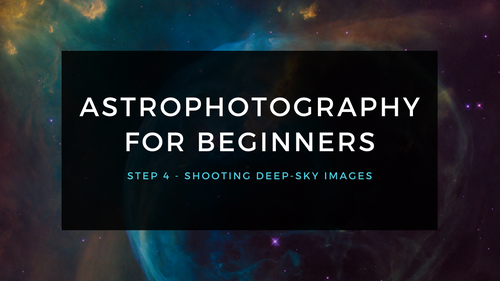
Astrophotography for Beginners Step 4: Shooting Deep-Sky Images
Taking deep sky pictures can be daunting, luckily there is an easy process to follow to allow you to get great shots! Here is the typical process for actually taking deep-sky images in the field.
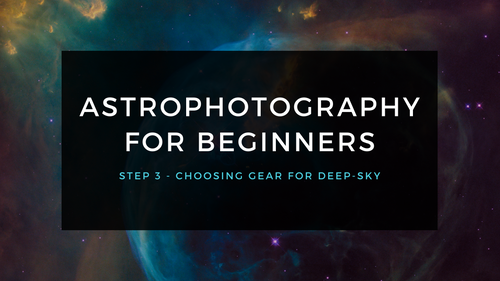
Astrophotography for Beginners Step 3: Choosing Gear for Deep-Sky Imaging
Using a star tracker gains you experience with the fundamentals of deep-sky imaging. Shooting the Moon gains you experience focusing and framing through your telescope. Through your sessions you’ll...
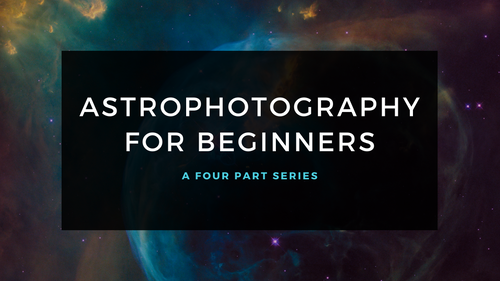
Astrophotography for Beginners - Start Here: Getting into Astrophotography Step by Step
Shooting the night sky has never been more popular, nor easier. The choice of equipment has also never been better, or more affordable. However, as per the advice given by Dickinson and Dyer in the...
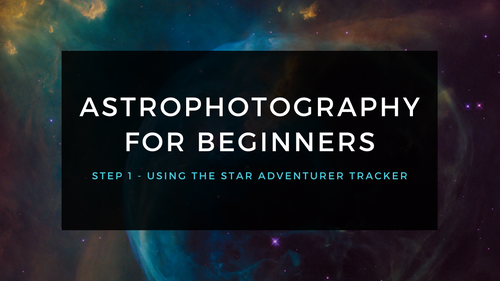
Astrophotography for Beginners Step 1: Using the Star Adventurer Tracker
By far the most economical and easiest way to capture beautiful images of the Milky Way and large deep-sky objects like the Andromeda Galaxy (shown here) is to use a star tracker. Here are steps an...
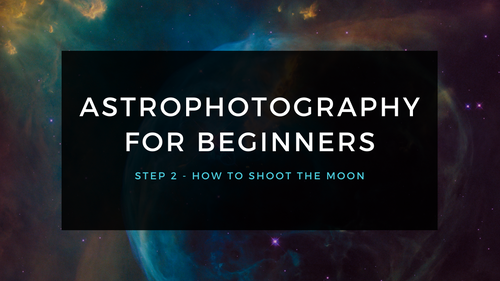
Astrophotography for Beginners Step 2: How to Shoot the Moon
Close-ups of the Moon are rewarding, and an easy way to learn to shoot through your telescope. While good results are possible with a phone camera clamped to an eyepiece (as shown below), this tuto...


